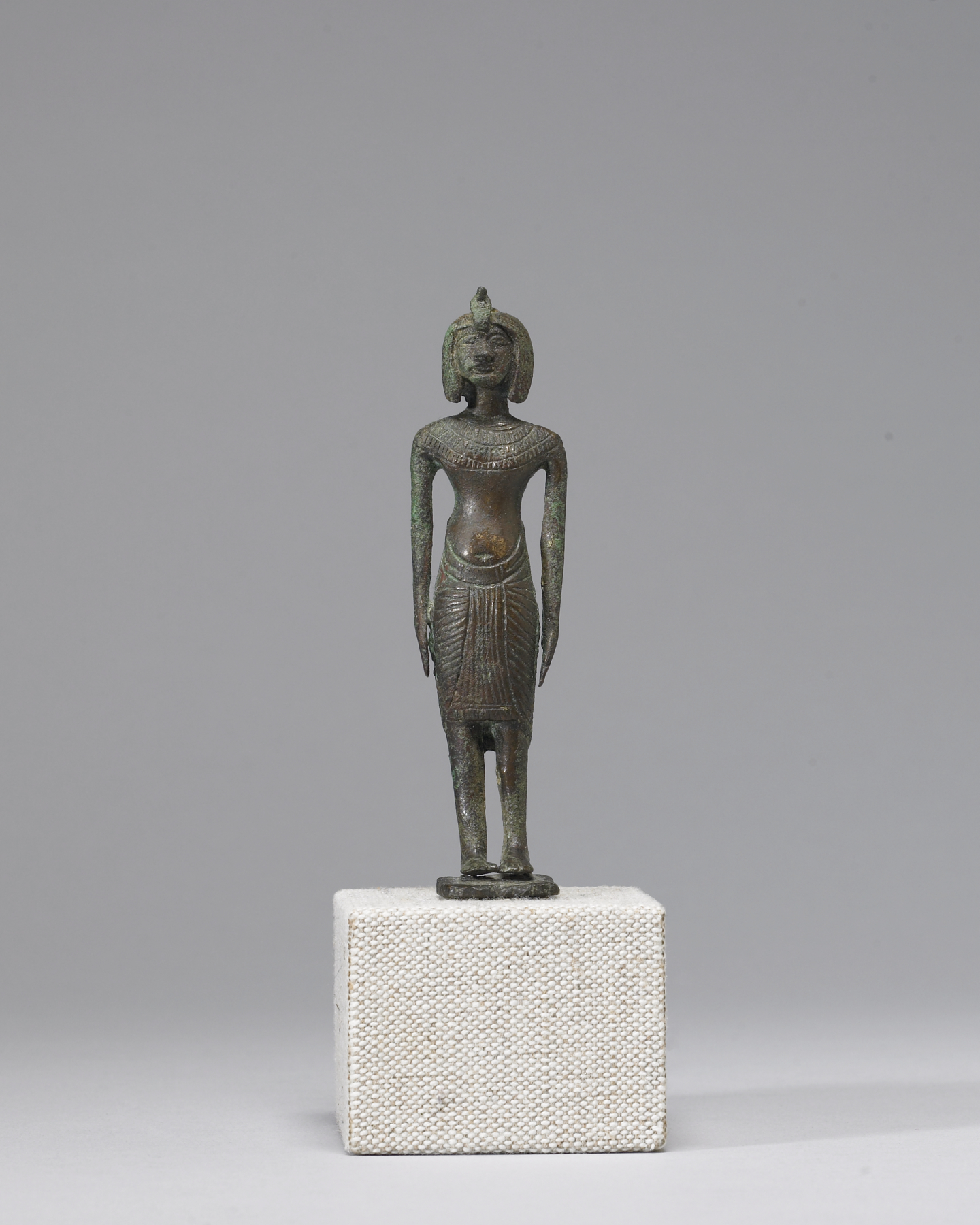Standing Amarna King
(Ancient Egypt and Nubia )
This small and somewhat ungainly figure of a king represents that remarkable period of religious revolution when Akhenaten (1352-1336 BCE) introduced the worship of his personal god, the Aten, the orb of the sun. Although the ruler represented by this tiny bronze image is not known, the details of dress and body confirm the dating. The so-called Nubian wig that slants from back to front was popular in this era, as was the pleated kilt that hugs the thighs and features a long front sash. The body type is also of this era, when the king's figure was deliberately elongated at the torso and enlarged in the chest and hip region. Most characteristic of all is the crescent shape of the navel, which narrows to a point at the bottom. The shape recalls one that naturally appears when the stomach is distended by plumpness and wrinkling; the art of the Amarna era was above all naturalistic. The figure's broad collar establishes a date for the work; such collars were not represented covering the shoulders until this precise time period, when the fashion for draping the necklace onto the arms emerged. Numerous images of Amarna kings wearing this collar show the same detail.
The small king is solid cast; while the arms and legs are poorly modeled, the necklace and kilt are carefully detailed. Study of this piece has indicated that the bronze was originally gilded.
Provenance
Provenance (from the French provenir, 'to come from/forth') is the chronology of the ownership, custody, or location of a historical object. Learn more about provenance at the Walters.
Henry Walters, Baltimore, 1927 [mode of acquisition unknown]; Walters Art Museum, 1931, by bequest.
Exhibitions
| 2007-2008 | Gifts for the Gods. The Metropolitan Museum of Art, New York; Foundation Pierre Gianadda Martigny, Martigny. |
Conservation
| Date | Description | Narrative |
|---|---|---|
| Treatment | cleaned; examined for technical study; x-ray florescence | |
| Treatment | The copper alloy sculpture's feet stood on a separately cast square metal platform. Over the years, questions have been raised by scholars about the originality of the platform. Surface analysis with x-ray fluorescence indicated a different alloy from the sculpture, and archival photographs of the sculputure from 1911 do not show the base. Because of this evidence, it is highly unlikely the base is original and it was removed from the sculpture. It will be stored and archived within the museum. | |
| 9/15/1959 | Treatment | cleaned |
| 8/19/1998 | Examination | survey |
| 3/12/2001 | Treatment | repaired |
Geographies
Egypt
(Place of Origin)
Egypt (Medinet Gurob) (Place of Discovery)
Measurements
4 1/8 x 1 1/16 x 3/4 in. (10.4 x 2.65 x 1.85 cm)
Credit Line
Acquired by Henry Walters, 1927
Location in Museum
Accession Number
In libraries, galleries, museums, and archives, an accession number is a unique identifier assigned to each object in the collection.
In libraries, galleries, museums, and archives, an accession number is a unique identifier assigned to each object in the collection.
54.406


